Trickle-Down Tech: From Luxury to Mainstream in Two Decades
How many years does it take for a flagship sedan's advanced features to become commonplace?
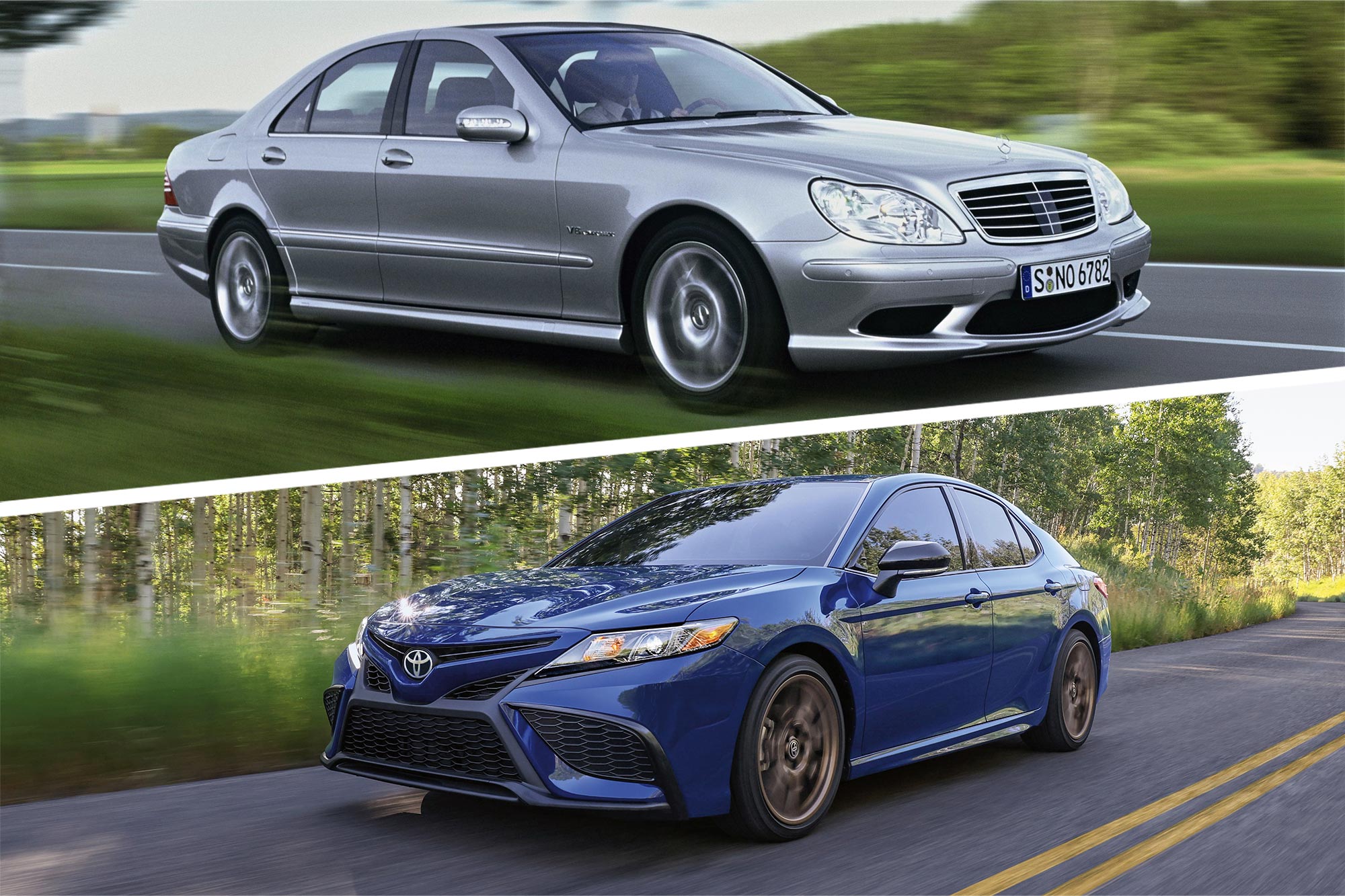 Mercedes-Benz | Toyota
Mercedes-Benz | Toyota
How long does it take for high-tech car features to trickle down to so-called mainstream cars? When buyers fork over nearly six figures for a car from a luxury automaker, they're getting bells and whistles that are not matched in mainstream cars.
The Mercedes-Benz S-Class has long been considered a standard-bearer in the automotive world, the vehicular locus where new advancements are introduced. It was among the first cars with a safety-boosting padded dash and steering wheel, and the first widely available with anti-lock brakes. The S-Class came to be known as a technological flagship for Mercedes-Benz, introducing many advanced features that often found their way into less expensive models as time went on.
The Toyota Camry has been a perennial strong seller and was the bestselling car of 2004. And 2014. And 2023. That sales success has continued for the past 20 years. This makes it an ideal benchmark, since it represents the most popular mainstream sedan in terms of sales in the U.S. How long would it take before a Toyota Camry could be equipped, from the showroom floor, with the same tech as a Mercedes-Benz S-Class?
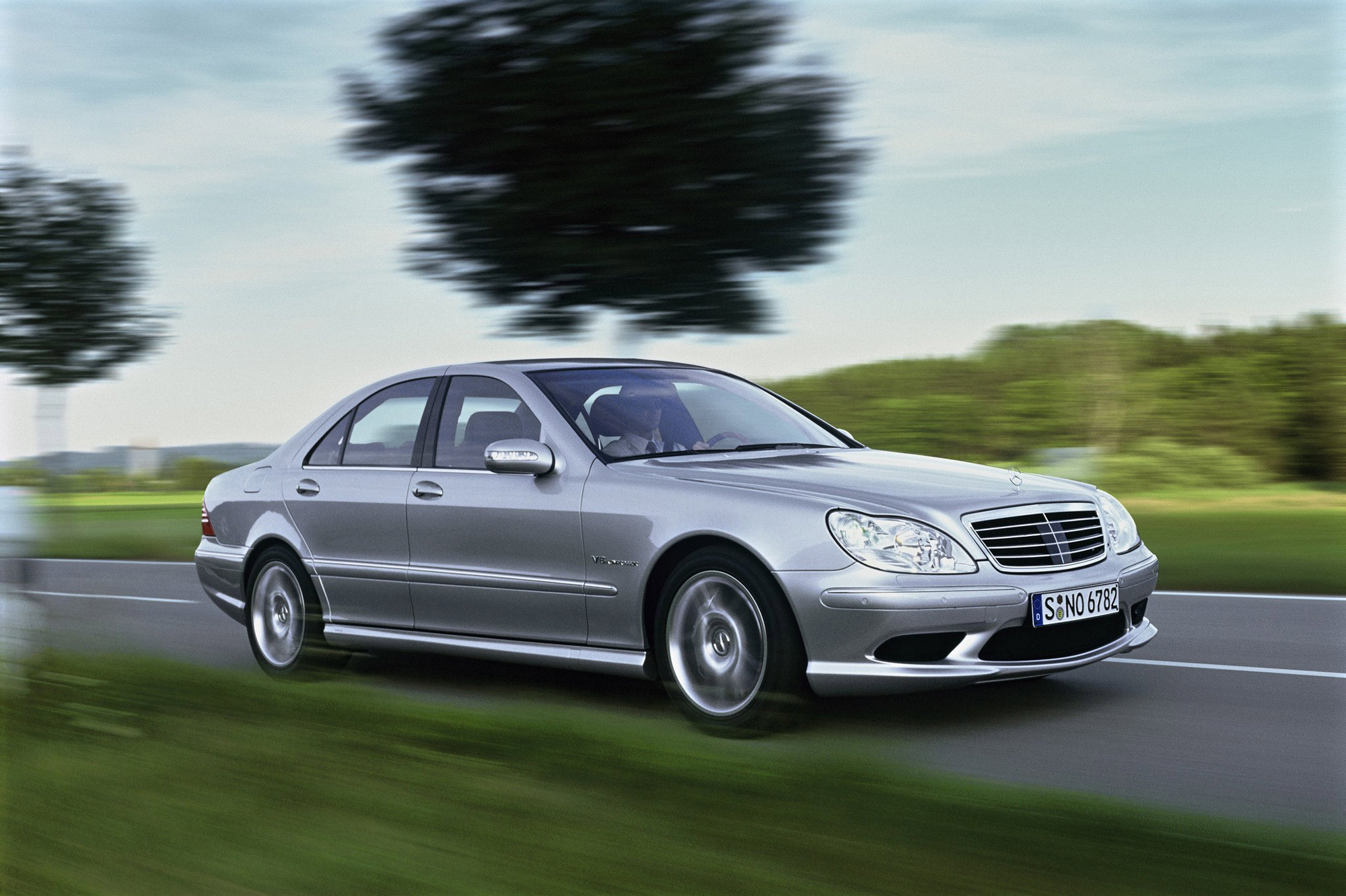 Mercedes-Benz
Mercedes-Benz
The 2004 Mercedes S-Class Was a Technological Tour de Force
Mercedes-Benz released the fourth generation of the S-Class in 1999. It was meant, in part, as a correction to the perceived sins of its forerunner, the heavy, overstuffed, and underwhelming third-generation model. It thus arrived a quarter ton lighter, a few inches lower, and brimming with technology.
Its innovations included many systems still used by Mercedes today. These included:
- COMAND: An infotainment system featuring a central screen that controlled music, navigation, and some vehicle features.
- Pre-Safe: A pre-collision mitigation system, which used sensors to determine when a car was about to crash or roll over and then pre-tighten seat belts, adjust the seating position, close the sunroof, and raise the rear headrests to protect occupants.
- Distronic: An adaptive, radar-based cruise-control system that kept a set distance and speed in highway traffic.
- Airmatic: A sophisticated, computer-controlled suspension that replaced coils and springs with air springs and adaptive dampers and was paired with Active Body Control, which used an array of hydraulics to minimize body roll and improve handling, especially in high-performance models.
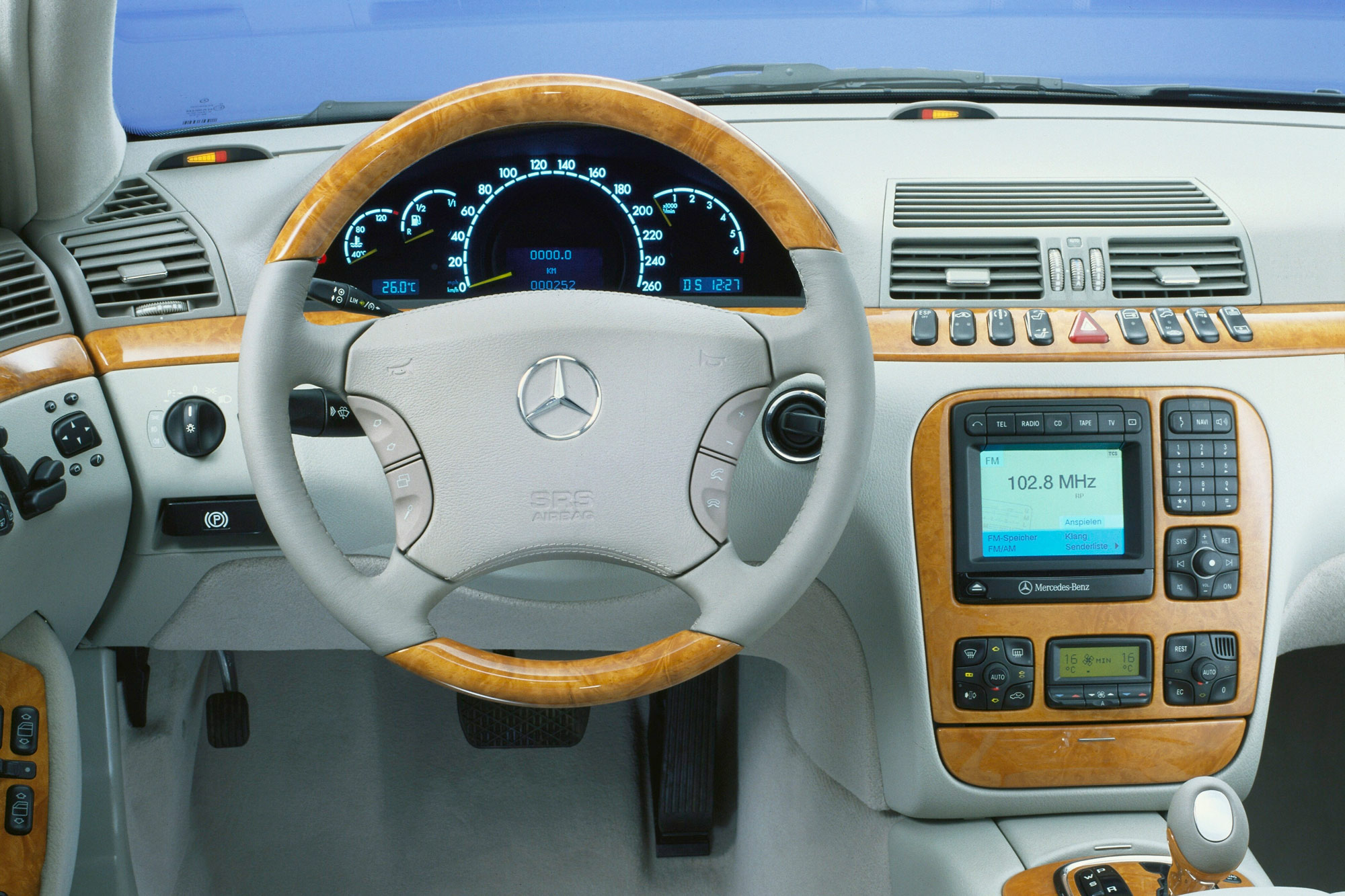 Mercedes-Benz
Mercedes-Benz
To all that impressive tech, when Mercedes introduced the 2004 S-Class, it added a host of ahead-of-their-time systems and capabilities, many of which wouldn't be matched by other automakers in a meaningful way for at least a decade. These included:
- Brake assist: A system that maximized brake engagement during a panic stop.
- ESP: Through the use of multi-channel anti-lock brakes, this system keeps the car on its intended path in low-traction conditions.
- Side curtain airbags: Cushions that inflate immediately upon impact to mitigate the impact of occupants' heads and upper bodies against the sides of the car's interior.
- Rain-sensing windshield wipers: Wipers that automatically turn on and adjust speed based on the amount of precipitation.
- Xenon headlamps: High beams and low beams that offered a 200% increase in brightness over halogen lights, which were the industry standard at the time.
- Parktronic: Ultrasonic proximity sensors on the front and rear bumpers that issue sonic warnings to the driver to aid in parking maneuvers.
- Seven-speed transmission: A multitude of gears — two or three more than most of the competition — ensured a smooth, quiet drive, as well as enhanced acceleration and fuel economy.
- Tele-aid concierge service: A GPS-based system that could call for help in a crisis/emergency.
- Keyless Go: A system that allows the engine to be started with an electronic key without inserting it in a tumbler.
- Ventilated seats with active bolsters: Seating surfaces that heat and cool the occupants, with power-activated thigh and hip cushions that hold occupants in place during turns.
- Linguatronic: Voice recognition system able to recognize 300 words to aid voice control of the radio, car phone, CD player, and navigation system.
- Tire pressure monitoring system: Tracks the pressure in all four tires to ensure that they are inflated properly, enhancing safety, performance, and fuel economy.
- LED brake lights: LEDs illuminate quicker than incandescents, providing faster warning for turns, stops, and other maneuvers.
 Toyota
Toyota
Some of the 2004 S-Class' Technology Reached the Mainstream by 2014
By 2014, the Toyota Camry had gained some serious ground but still hadn't caught up to 2004 Mercedes' advancements.
For example, you could not get radar-guided cruise control, a pre-collision mitigation system, or an air suspension system on a Camry. The 2014 Camry did have an onboard infotainment system with navigation and Smart Key, which enabled roughly the same feature set as the Mercedes-Benz COMAND system and Keyless Go as well as side curtain airbags, tire pressure monitoring, ESP stability and traction control, and a brake-force distribution system.
The 2014 Camry even bested the 2004 S-Class in one respect: It had a backup camera.
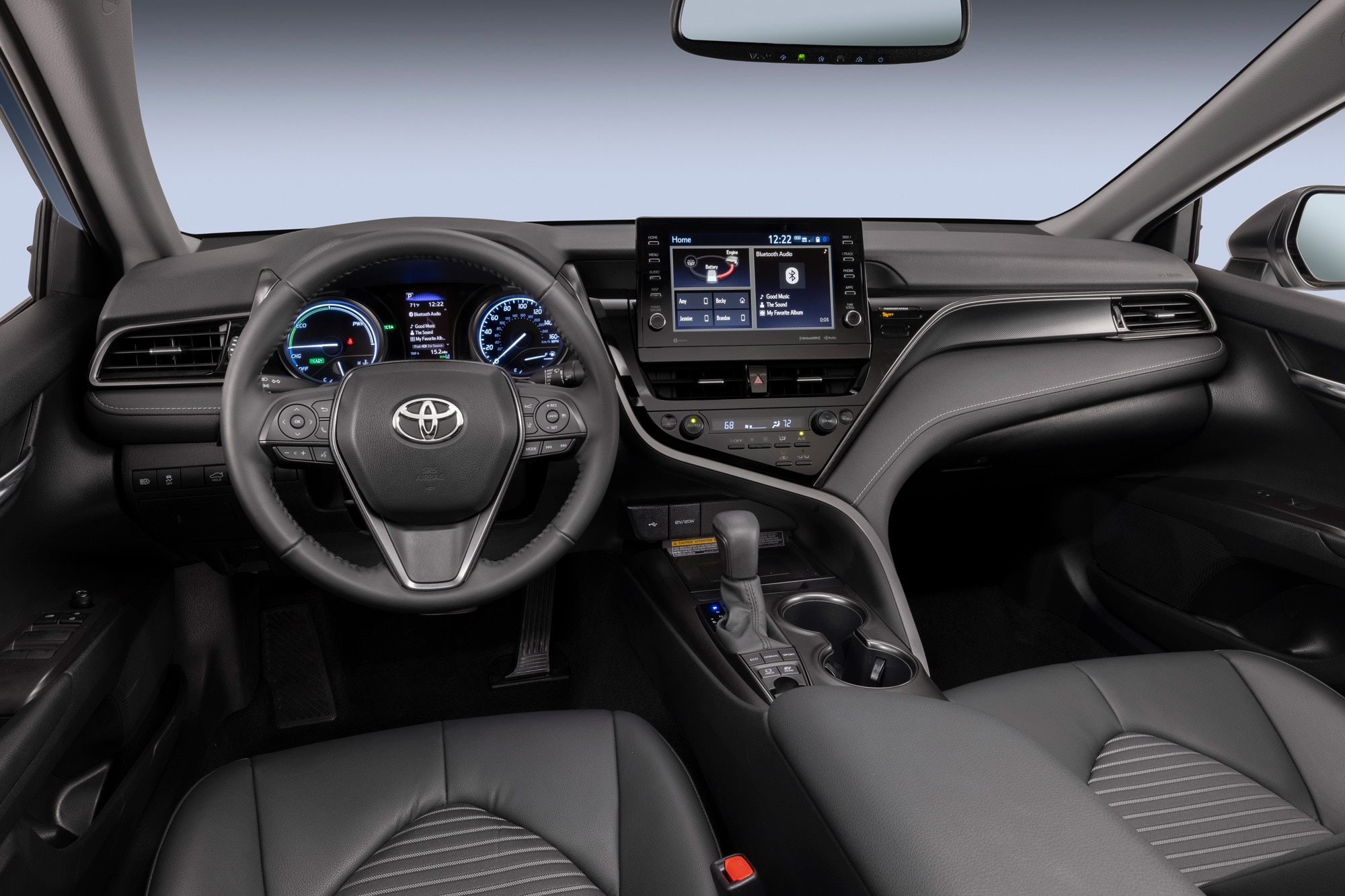 Toyota
Toyota
By 2024, Even the Base Camry Matches the 2004 S-Class' Features
Fast forward 10 more years, and even the base model 2024 Toyota Camry matches or surpasses all the active safety features of the 2004 S-Class. It also has parking assist and even sports ventilated seats. But while all the safety tech from that 2004 Mercedes-Benz has trickled down to this level of the market, dynamic tech features that allow the car's major systems to adapt to changing road conditions or driver preference has not. Such systems include air suspension and active suspension, which allowed the S Class to raise or lower itself as needed.
This is surprising, since Toyota began producing a racy version of its mainstream sedan, modified by Toyota Racing Development, in 2020. With a 5.4-second zero-to-60-mph time, it would trounce all but the most potent 2004 S-Classes, the S600 and S55 AMG, in a drag race.
The Camry has a number of features that the Benz didn't. For example, it sports an available onboard Wi-Fi hotspot, and a 10.0-inch color head-up display that projects important information — vehicle speed, navigation directions — onto the windshield in the driver's line of sight.
The contemporary S-Class remains a technological leader, with features such as augmented reality head-up navigation, four-dimensional sound systems, and screens that stretch from one end of the dashboard to the other. You can expect to find similar features in less-expensive cars. Eventually.
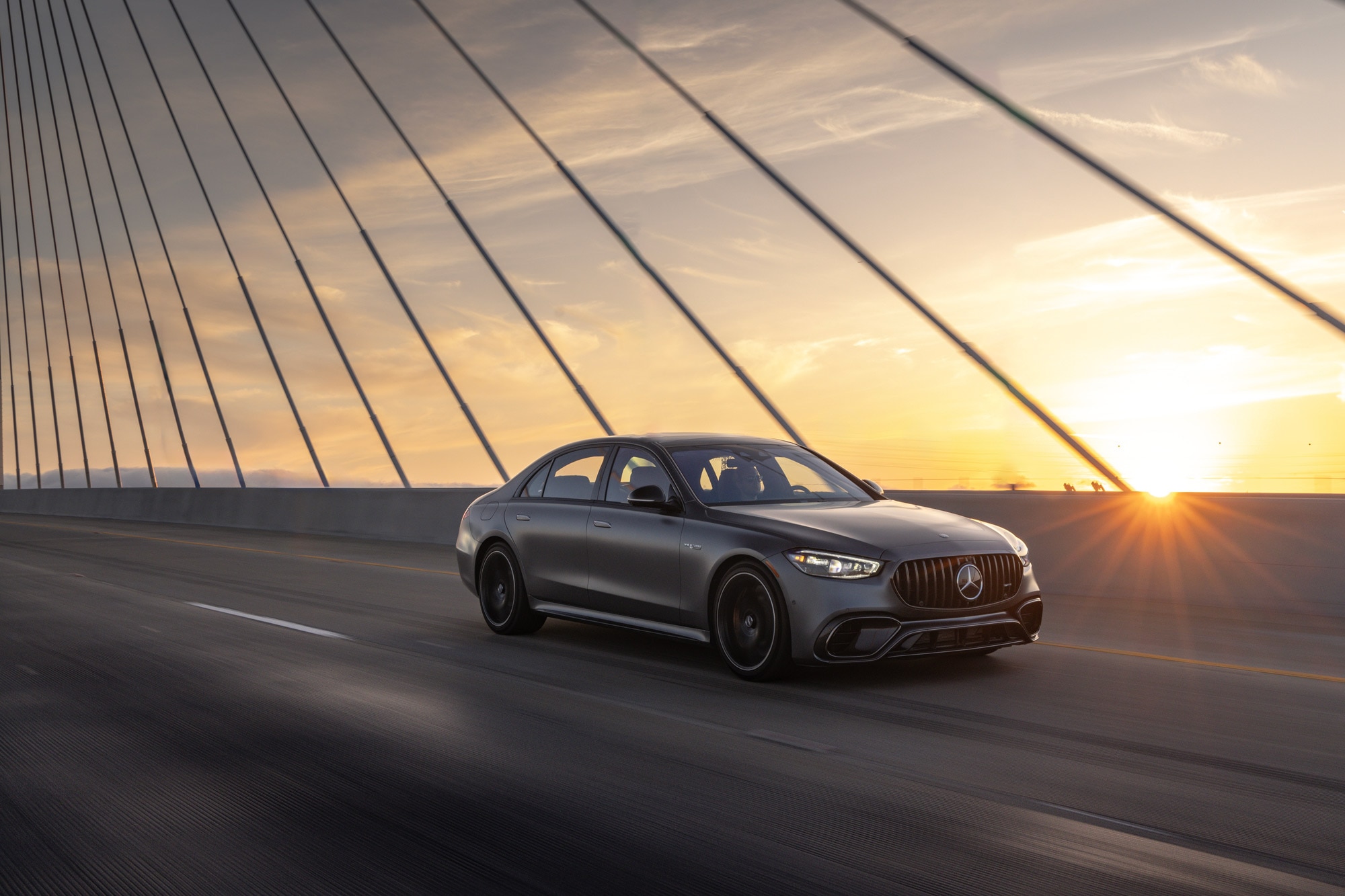 Mercedes Benz
Mercedes Benz
Written by humans.
Edited by humans.
 Brett Berk
Brett BerkBrett Berk is a New York City-based writer who covers the intersection of cars and culture: art, architecture, books, fashion, film, politics, television. His writing appears regularly in top-tier automotive and lifestyle publications.
Related articles
View more related articles